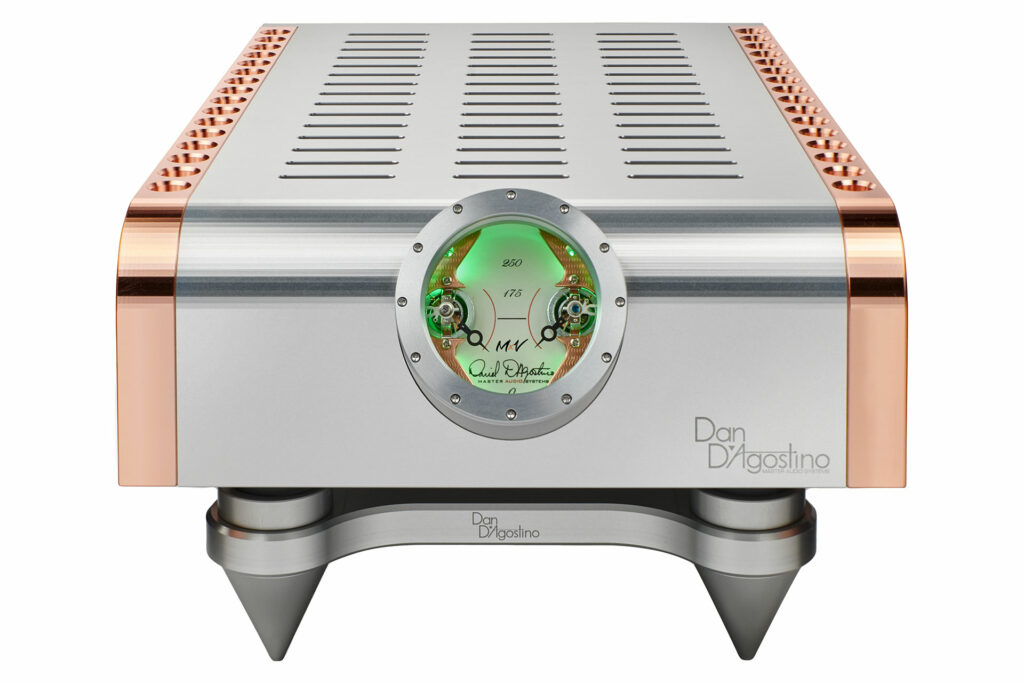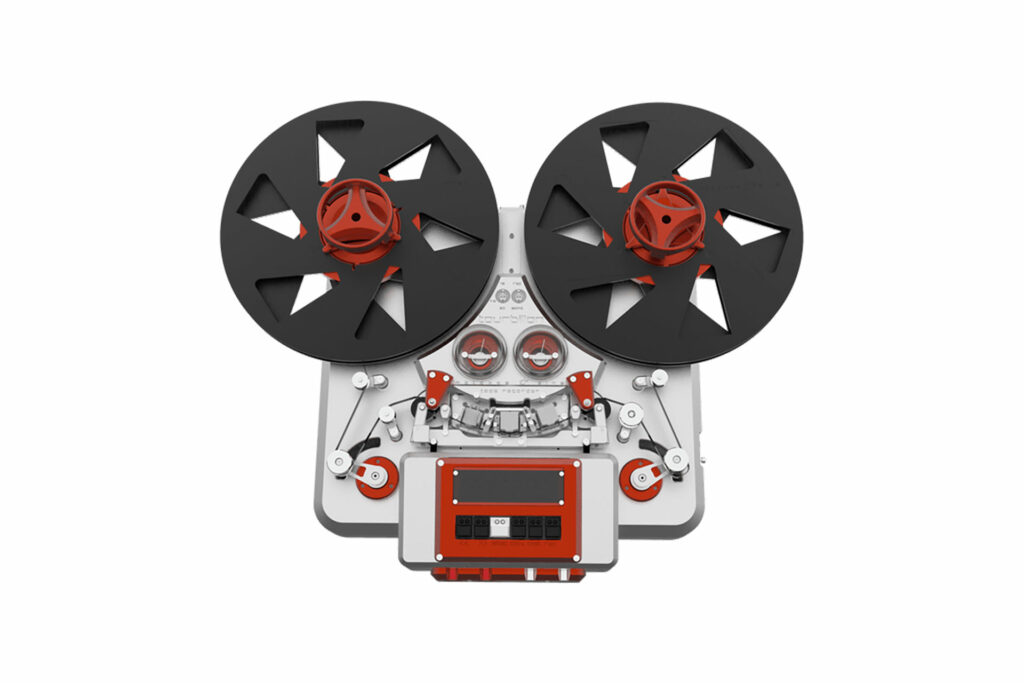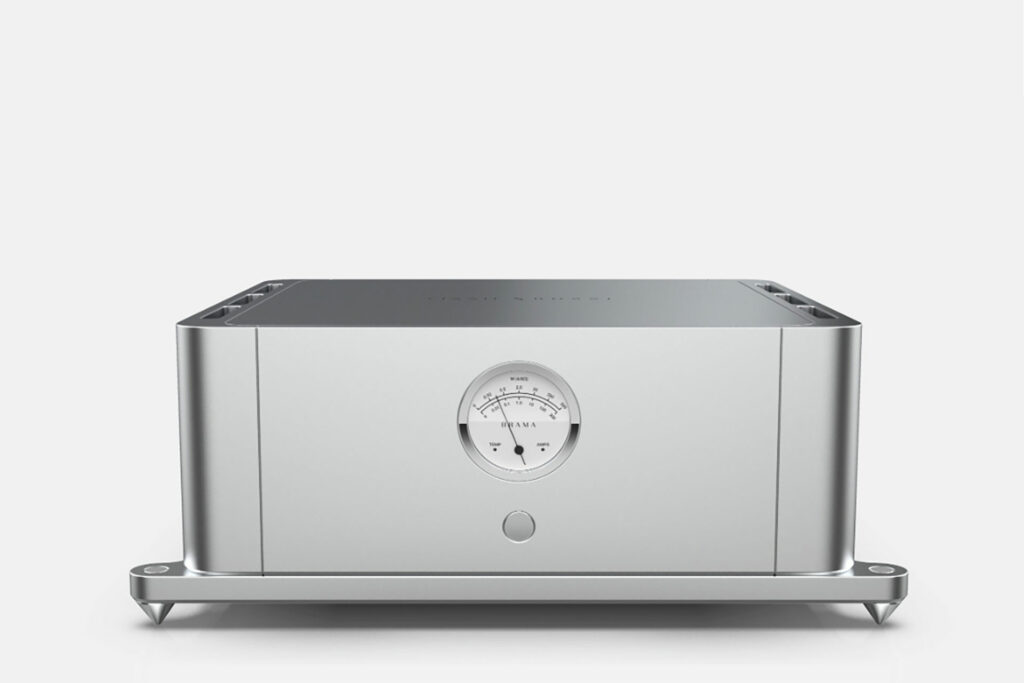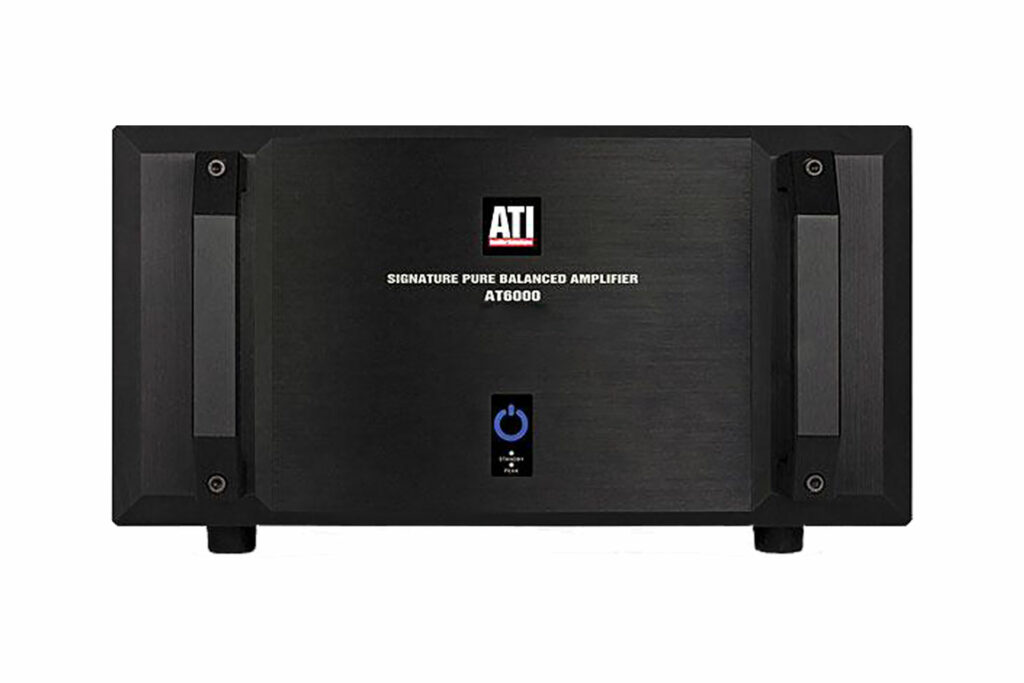If we lived in a perfect world, we might seek audiophile components that do nothing other than sound great. There are examples of such products out there, such as ATI amplifiers, which up until recently used to be handmade right here in Los Angeles in a big factory in East L.A. They weren’t sexy-looking at all, but Morris makes a truly fine-sounding and performing amp that many in-the-know audio enthusiasts flock to. Today, audiophiles look to his design work (now made in China) via Monoprice, at even lower prices and with suitable industrial design. Are either of these amps pretty? Nope, but they sure are kickass Class-AB amps that are priced fantastically, and that’s a very good start for any audiophile looking to upgrade their system.

Do You Need a Cool-Looking Gauge on the Front of Your Amp?
McIntosh is one of the most singular iconic brands in the audiophile hobby. One of the first things that any potential customer notices with their amps are the glowing blue gauges on the front panel. The glow haphazardly bounces all over the place, based on the power used by the amp, and looks pretty compelling in the process. Is this an important thing to invest your amp money into? Nope. It is important to know that most of our audiophile listening is done from one to 30 watts, even if we have 400-watt monoblock amps. Watching an audiophile gauge will teach you that lesson quickly. What a really cool gauge on the front of your audiophile amplifier does is to make the product have a little more design appeal and user engagement. A really cool gauge on your amp costs money at the parts cost and ultimately at the retail level, but it also adds a level of pride in ownership that has little (to nothing) to do with performance, but adds intrinsic value to your system.

Audio as Sculpture is OK in the Right Situation
Anybody who’s read my articles over the years knows that I don’t fall over myself to talk about vinyl as a high-resolution audiophile format. That’s because it isn’t high-resolution, or even remotely capable of reproducing the music that is recorded on a master tape. Vinyl is a 100-plus-year-old technology that is highly historically significant, relevant to the way that much of our classic rock library was released, which avoids needing any computers or blue-light-emitting devices to make music. Those are good things, but the dynamic range of vinyl at its absolute best is about 64 to 68 dB, which is about half that of a Compact Disc, with HD files performing even better than that. That “warmth” that you hear is actually distortion from the stylus vibrating physically in the groove. With only eight-plus percent of the record music sales (according to the RIAA) being in physical media for 2022’s all-time record music sales – the simple fact is that no matter how excited one of the septuagenarians at the establishment audiophile print magazines get on the topic, vinyl is best for its nostalgia aspect than its performance or value (have you seen the price of new vinyl these days?).
With all of that said, I want a turntable. Badly.
I love the idea of ditching the blue light and sticking with something less computer-driven from time to time when it comes to my audiophile system. The concept of listening to a record on the format that it was released on is also oddly appealing for this burned-out Gen Xer, but what really draws me to owning a turntable is the often spaceship-like industrial design. In my fantasy world (where I end up buying a turntable), I would want something bitchin-looking. Think: Oracle or Goldmund or J.Sikora. I want something silver, modern and awesome-looking. I want to make a statement about art and design with my (future) turntable. I want to make the ritual of playing an LP to be like watching Snoop’s weed concierge roll a joint. It is all about the ritual, and that is a big part of listening and enjoying vinyl.
Let’s take this scenario one step deeper, to reel-to-reel machines. Do I have any tapes? No. Do I know where to get “protection copy” one-offs on one-quarter-inch analog tape? I (sort of) do, but I am not sure how much of it that I could get. I can tell you that quarter-inch analog tape can sound insanely good if you aren’t ripping CDs onto tape or other silly processes. I’ve heard Lyle Lovett’s Joshua Judges Ruth at an AES convention where they played “Church” on every type of tape (and CD, for reference sake) from cassette to quarter-inch tape, as well as two-inch master tape. Quarter-inch tape, like what is played on a reel-to-reel deck, sounded absurdly good on this absurdly powerful analog playback format. Will mainstream audiophiles make this a meaningful source component in the years to come? Realistically, they will not. However, we all can dream of what it is like to play “Girl, You’ll Be a Woman” by Urge Overkill at the start of your date with Mrs. Marsellus Wallace. To me, that analog cool factor is why I am shopping for a Revox, Studer or Nagra machine in my spare time. This isn’t a smart investment in the absolute performance of my audiophile system as much as it is an outrageously cool toy to add, especially when it could be out in my listening room when all of the other components other than my Bowers & Wilkins 802 D4 speakers are behind closed doors, thus out of sight.
It Is Expensive to Make Gorgeous-Looking Audio Gear?
Behind the scenes, I help many of my clients with all sorts of elements of their business. Sometimes it is helping them make a strategic hire. Other times, it includes a solid dealer introduction. In the modern era, I am talking more and more to the new-school amp guys about how to make their semiconductor-based, Class-D amps look as good as they sound. Remember, many of these companies are new. They sell their goods on value, and often don’t have the most polished-looking gear, even if it can best the performance of an amp costing five times their retail price. Without the rosso forte red paint job, that Ferrari just isn’t quite the same thing, and the same concept goes in audio.
Neal Feay is an industrial design firm based in Santa Barbara that designs metal for all sorts of fancy and fantastic artful products, including (but not limited to) audiophile gear. Most recently, I had some Classe gear in my system that was designed by their firm, which looked really, really fantastic. When your brand is owned by a multi-billion-dollar, publicly-traded entity, $40,000 isn’t a crazy amount of money to spend on industrial design. For a small audiophile company run by an engineer solely focused on performance, this price might be too steep to pay to make casework for an audiophile component. Can great-looking metal/case work be done for less money? You bet it can, and that is the challenge in that, even if the best-performing amp in the world is butt-ugly, it will have issues selling in this tricky marketplace. The right answer includes some cost engineering, paired with a little design sizzle.

What Audiophile Products Really Catch Your Eye?
Dan D’Agostino didn’t need to prove himself after 29 years at Krell, nor was/is Krell gear anything but sexy, but Dan’s namesake uber-expensive made-in-Arizona audiophile electronics brings exotic materials like copper into their industrial design with a steampunk design language that is truly lust-worthy. Dan’s gear sounds great and has the ID to match.
Vinnie Rossi is another electronics brand that is lesser-known, but when it comes to industrial design, his work is likely my elite favorite in the entire audiophile hobby. The aluminum chassis are subtle, modern, slick and silver. The gauges are small but gorgeous. Vinnie gives his product that old-school Cello or Patek Phillipe look and it is appealing. Very appealing
Nagra and Mexaas are making reel-to-reel machines that are pure sex in terms of industrial design. Do they have a big price tag? You bet they do, but they deliver cool factor in spaces.
There are countless turntables that just ooze industrial design excellence. I am dying to own an Oracle, which dates back 30 years since the first time that I saw one. Another brand that I need to stop and see at every audiophile show is J.Sikora, makers of some of the most expensive and over-the-top spinners of chunks of round plastic that I have ever seen. Again, vinyl isn’t my main thing, but I’d own one of these turntables in a New York second if given the right opportunity…
When it comes to speakers, there are nearly unlimited options to show wild industrial design. Some even go too far, like the uber-well-designed speakers from people like Lawrence Dickey, who designed the still popular (but they won’t say is their best-performing speaker) Bowers & Wilkins Nautilus. His South African-made Vivid Audio speakers are even more evolved, but look like Teletubbies to me, and would never have a permanent place in my personal listening room, despite just how good that they sound. Go to any audiophile show worth its salt, and you will see wild-looking speakers that deliver both excellent performance and gorgeous form factor. Wilson Audio made hay in the 1990s by delivering custom PPG paint colors to their speakers, which was such a great idea that many others (even Paradigm in Toronto with their reference speakers) do the same. Having just returned from the first Southwest Audiofest in Dallas the two speakers that are coming to mind in terms of stellar industrial design are the all-aluminum (including their seamless drivers) from YG Acoustics, and Estelon speakers, which are radical-looking, but not so outrageous that they will start divorce proceedings. In the audiophile loudspeaker world, there is no shortage of eye candy for you to invest in that also sounds uniquely good, too.

Final Thoughts on the Look of Audiophile Gear…
We should be focusing our audiophile budgets on our room and room acoustics more than we likely do already today. There are many “plain Jane” audiophile products that deliver that wolf in sheep’s clothing performance that we seek as mindful, diligently-researching audiophiles. Those are fun to find and, by all means, we try to deliver our readers the best leads on high-performance, high-value gear. Then again, there is something to be said for the first time that you give your new Ferrari a bath and wipe her (pronoun choice made on purpose) down with a fine chamois. That paint job. Those feminine yet aggressive lines. Even just parked in your driveway, the car just looks fast. And a ZR1 Corvette is faster, but it just doesn’t have those Scuderia badges from Maranello on the sides, because there are some non-performance-oriented factors that make us buy gear that delves into the emotional part of our brain versus the rational area. There are those who might shame you for wanting shiny-pretty toys, and those people themselves are basically tools. When you’ve been in the hobby long enough and build up enough equity in your system, there is nothing wrong with owning audiophile gear that looks as great as it sounds. In fact, around here – it is encouraged.
What is your stance on the look of gear versus the sound? What products catch your attention these days? We shared a few of our favorites? Will you add to the list here (below) in our moderated comments? We love to hear from you!




When you can’t differentiate your product based on performance, quality or cost; it’s time to ‘enhance’ its looks with audio jewelery. These changes are often the result of a focus group or marketing non-audiophiles. If the buyer is seeking acceptance from their significant other, they might be better off buying them a tennis bracelet or necklace. Non defeatable meters & front panel displays are a distraction & much better placed at the listening position via phone or tablet app however, I realize that engineering is much harder to do.
Over the years I have come to appreciate audio gear that are also works of art. But D’Agostino’s “steam punk” look is too far over the top for me. That goes for any gimmicky physical designs, but D’Agostaino’s work stands out for me. Returning to earth from the stratosphere of the price space, I refuse to buy anything that says “Schitt” on the front panel regardless of how good the sound or build quality for the price.
Yes, the turntable world is full of beautiful, expensive sculptures. I marvel at how striking they look, as well as how good they can sound despite the suboptimal SNR, when I see and hear them at shows.. But I doubt I will ever replace my SOTA Star. I think it looks pretty good and for what I paid in dollars in 1987 I couldn’t look at any of these masterpieces
It’s Schiit. I have to admit their older YT vids would put anyone off, slurred speech with wine glass in hand but, the equipment reviews at various test sites tell a much different & competant story. I bought a Modi DAC based on the FA review & have not regretted it. Schiit is US designed & manufactured, an almost unheard of feature at their price levels. They have yet to make anything with gold trim, a plus in my book!!!
Speaking of Schiit, when you consider the price, their industrial design and overall looks are pretty darn good… especially when compared to some of the “metal box” class d and GaN amps that sell for equal or more money.
Wait a minute we can’t let this topic go without talking about Bang and Olufsen. Their products always have had a lot of of eye appeal and good sound. I’m sure there is a lot of debate surrounding this company. From my perspective their equipment always sounded good, but many times did not provide the best sound for the money when compared to other brands. Plus, their products did not always integrate easily with other brands. Still, I remember some of their entry level speakers sounded so amazingly good they would stop you in your tracks. I’m sure it would be interesting to hear (and see) their latest speakers. And some of us may recall the Beosound 9000 CD players. Currently, B&O is bring them back to Struerin Denmark, where they were originally created, and refurbishing and updating them. This is the second launch from their Recreated Classics series, and, apparently, available for $55,000.
Audiophiles want to talk about our lauded brands but when you go to a wealthy (non-audiophile) person’s home the brand that you are MOST LIKELY TO SEE is B&O.
Their new speakers that they are showing at places like CEDIA and CES with LG are GORGEOUS. Their turntables are iconic and ageless. They have tower CD players that are totally out-of-the-box.
I AGREE FULLY with you.
Jerry, Your obserbation that ” When you go a wealthy (non-audiophile) person’s home the brand that you are MOST LIKELY TO SEE is B&O” tracks 100% with my experiance. I wondering if you can still buy replacements for their turntables. I believe these were ubique.
When it comes to design, what appeals is obviously a very personal thing. However the iconic designs of the last few centuries have something in common that work on the emotional level for the many and not the few. Looking at the images in the article, to my eyes, these are ‘designed’.
Regarding audio brands, perhaps (in Europe at least) designs much as the Linn LP12 and the Naim Nait might deserve the term ‘icon’ both in their contribution to audio history but also design.
I took an 8-watt Naim Nait with a Rotel 855 and Audio Alchemy DAC and some Celestion 3 speakers with me to music school at USC 30 years ago.
I wouldn’t put the NAIT on my list for design but it is pretty cool product. The LP-12 wouldn’t make my list for design but it is like the Porsche 911 of turntables in terms of longevity. Incredible upgradability. INCREDIBLE. We have another selfish audiophile publication to thank for STEALING ONE so that we couldn’t review it. Not the first jackass move by this online jackass.
After mulling this topic over for a few days, the two items that always rise to the top are the JBL Paragon and L-100 loudspeakers. I would also give the Philips GA 212 & GA 123 turntables with their Otis elevator style buttons honorable mention. Timeless designs!
I am one of many who directly compares analog master tapes and 2nd generation tapes to their lacquers, test pressings, commercial pressings and their concomitantly recorded digital releases.
The question of the role of measurements and what can’t be measured continue to apply.
To claim digital to be fundamentally superior due to better measurements, however, does not apply when blind listening tests provide different results.
Please keep the atomism–the sum of the parts equals the whole perspective–on hold until all of the parts and the space between the parts are known.
Let’s leave the dogma to the dogmatists.
Is not beauty in the eye of the beholder?
And then there are those who are without sight.
I’m without criticism of those who wish to pay extra to entertain a sense unrelated to the experience of music.
While the look of an audio product product may add a relative value, I’m notsure it is an intrinsic one–in spite of an occasion or two of synesthesia.